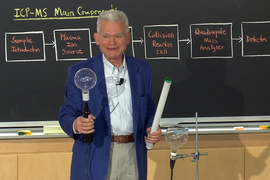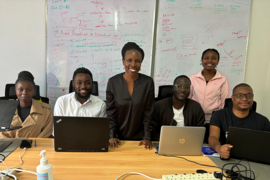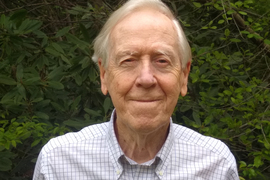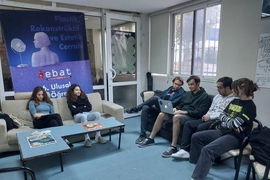Bernardo Picão has been interested in online learning since the early days of YouTube, when his father showed him a TED Talk. But it was with MIT Open Learning that he realized just how transformational digital resources can be.
“YouTube was my first introduction to the idea that you can actually learn stuff via the internet,” Picão says. “So, when I became interested in mathematics and physics when I was 15 or 16, I turned to the internet and stumbled upon some playlists from MIT OpenCourseWare and went from there.”
OpenCourseWare, part of MIT Open Learning, offers free online educational resources from over 2,500 MIT undergraduate and graduate courses. Since discovering it, Picão has explored linear algebra with Gilbert Strang, professor emeritus of mathematics — whom Picão calls “a legend” — and courses on metaphysics, functional analysis, quantum field theory, and English. He has returned to OpenCourseWare throughout his educational journey, which includes undergraduate studies in France and Portugal. Some courses provided different perspectives on material he was learning in his classes, while others filled gaps in his knowledge or satisfied his curiosity.
Overall, Picão says that MIT resources made him a more robust scientist. He is currently completing a master’s degree in physics at the Instituto Superior Técnico in Lisbon, Portugal, where he researches prominent lattice quantum chromodynamics, an approach to the study of quarks that uses precise computer simulations. After completing his master’s degree, Picão says he will continue to a doctoral program in the field.
At a recent symposium in Lisbon, Picão attended a lecture given by someone he had first seen in an OpenCourseWare video — Krishna Rajagopal, the William A. M. Burden Professor of Physics and former dean for digital learning at MIT Open Learning. There, he took the opportunity to thank Rajagopal for his support of OpenCourseWare, which Picão says is an important part of MIT’s mission as a leader in education.
In addition to the range of subjects covered by OpenCourseWare, Picão praises the variety of instructors. All the courses are well-constructed, he says, but sometimes learners will connect with certain instructors or benefit from a particular presentation style. Since OpenCourseWare and other Open Learning programs offer such a wide range of free educational resources from MIT, learners can explore similar courses from different instructors to get new perspectives and round out their knowledge.
While he enjoys his research, Picão’s passion is teaching. OpenCourseWare has helped him with that too, by providing models for how to teach math and science and how to connect with learners of different abilities and backgrounds.
“I’m a very philosophical person,” he says. “I used to think that knowledge was intrinsically secluded in the large bindings of books, beyond the classroom walls, or inside the idiosyncratic minds of professors. OpenCourseWare changed how I think about teaching and what a university is — the point is not to keep knowledge inside of it, but to spread it.”
Picão, now a teaching assistant at his institution, has been teaching since his days as a high school student tutoring his classmates or talking with members of his family.
“I spent my youth sharing my knowledge with my grandmother and my extended family, including people who weren’t able to attend school past the fourth grade,” he says. “Seeing them get excited about knowledge is the coolest thing. Open Learning scales that up to the rest of the world and that can have an incredible impact.”
The ability to learn from MIT experts has benefited Picão, deepening his understanding of the complex subjects that interest him. But, he acknowledges, he is a person who has access to high-quality instruction even without Open Learning. For learners who do not have that access, Open Learning is invaluable.
“It's hard to overstate the importance of such a project. MIT’s OpenCourseware and Open Learning profoundly shift how students all over the world can perceive their relationship with education: Besides an internet connection, the only requirement is the curiosity to explore the hundreds of expertly crafted courses and worksheets, perfect for self-studying,” says Picão.
He continues, “People may find OpenCourseWare and think it is too good to be true. Why would such a prestigious institution break down the barriers to scientific education and commit to open-access, free resources? I want people to know: There is no catch. Sharing is the point.”










